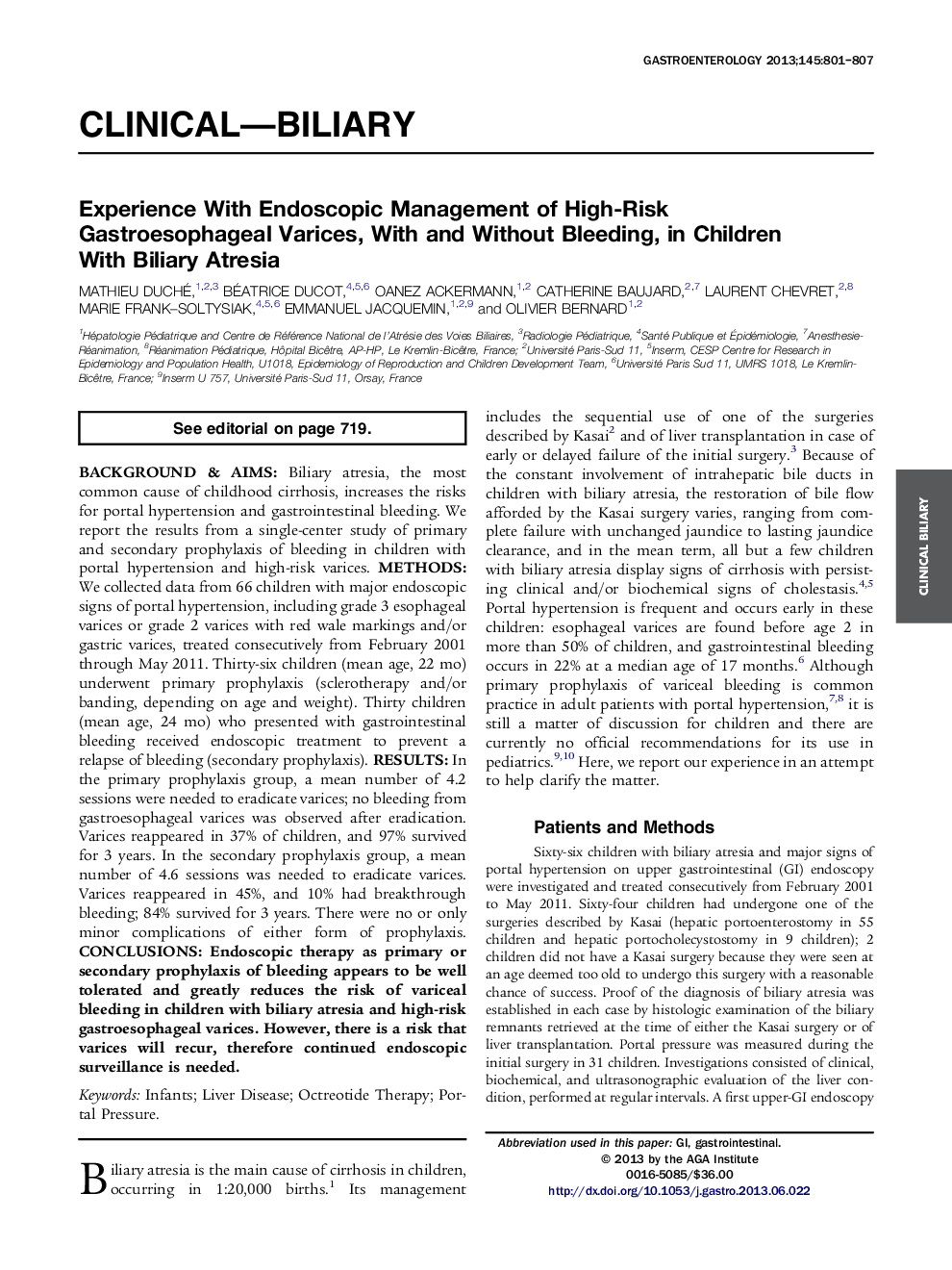| کد مقاله | کد نشریه | سال انتشار | مقاله انگلیسی | نسخه تمام متن |
|---|---|---|---|---|
| 6095126 | 1209814 | 2013 | 7 صفحه PDF | دانلود رایگان |

Background & AimsBiliary atresia, the most common cause of childhood cirrhosis, increases the risks for portal hypertension and gastrointestinal bleeding. We report the results from a single-center study of primary and secondary prophylaxis of bleeding in children with portal hypertension and high-risk varices.MethodsWe collected data from 66 children with major endoscopic signs of portal hypertension, including grade 3 esophageal varices or grade 2 varices with red wale markings and/or gastric varices, treated consecutively from February 2001 through May 2011. Thirty-six children (mean age, 22 mo) underwent primary prophylaxis (sclerotherapy and/or banding, depending on age and weight). Thirty children (mean age, 24 mo) who presented with gastrointestinal bleeding received endoscopic treatment to prevent a relapse of bleeding (secondary prophylaxis).ResultsIn the primary prophylaxis group, a mean number of 4.2 sessions were needed to eradicate varices; no bleeding from gastroesophageal varices was observed after eradication. Varices reappeared in 37% of children, and 97% survived for 3 years. In the secondary prophylaxis group, a mean number of 4.6 sessions was needed to eradicate varices. Varices reappeared in 45%, and 10% had breakthrough bleeding; 84% survived for 3 years. There were no or only minor complications of either form of prophylaxis.ConclusionsEndoscopic therapy as primary or secondary prophylaxis of bleeding appears to be well tolerated and greatly reduces the risk of variceal bleeding in children with biliary atresia and high-risk gastroesophageal varices. However, there is a risk that varices will recur, therefore continued endoscopic surveillance is needed.
Journal: Gastroenterology - Volume 145, Issue 4, October 2013, Pages 801-807